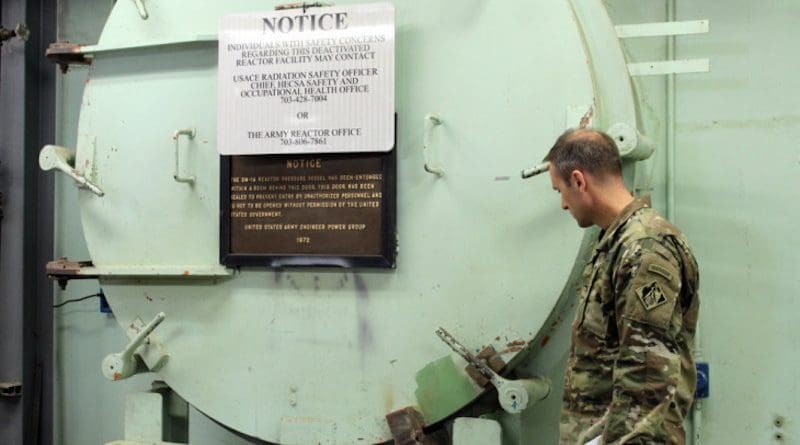US Army Finalizes Plans To Decommission Historic Nuclear Reactor In Alaska
The US Army Corps of Engineers (USACE) with the Alaska State Office and other parties has finalised an agreement on how to preserve the history of a mothballed nuclear reactor at Fort Greely, Alaska. Final decommissioning of the 20.2 MW (thermal) SM-1A pressurised water reactor, which operated from 1962 to 1972, is due to begin next year.
SM-A1 is located near Delta Junction on the Fort Greely Military Reservation in central Alaska, 225 miles northeast of Anchorage. Based on a prototype for stationary medium-power plants built at Fort Belvoir, Virginia, the reactor was designed as a test facility for this type of equipment in an arctic environment. While its primary mission was to supply electrical power and heating steam for utility systems at Fort Greely, it had a secondary mission to study the economics of operating a nuclear-type electrical plant compared to conventional oil-fired systems in a remote area where fuel costs are high and supply lines unusually long.
Construction of the reactor, which used highly-enriched uranium oxide fuel clad in stainless steel, began in 1958, and first criticality was achieved in March 1962. Following its final shutdown in 1972, and the reactor was prepared for safe storage, or ‘safstor’. This involved the removal of nuclear fuel, minor decontamination, shipment of pre-packaged radioactive waste, encasing some reactor components in concrete and grout, sealing the pressure vessel, and installing warning signs and monitoring devices. Some areas were maintained as restricted areas for radiation safety considerations.
The USACE now intends to complete the decommissioning and dismantlement of SM-1A so the site can be released for unrestricted use. A final environmental assessment and finding of no significant impact for the reactor’s decommissioning, which address comments received during a public review earlier this year, are due to conclude later this month, after which USACE says it can go ahead with implementing the decommissioning plan. It expects to issue a Request for Proposals (RFP) for the decommissioning and dismantlement work later this year.
Historic preservation
The USACE has also signed a memorandum of agreement with the Alaska State Historic Preservation Office and the City of Delta Junction, setting out how the history of SM-1A and its arctic mission will be preserved. This will include documenting the dismantling of the facility through video and digital photography, as well as recording interviews with former operators, employees and other personnel associated with the construction, operation and initial closure of SM-1A.
USACE has said it will salvage historical items during decommissioning and dismantlement “when safe and feasible”.
SM-1A is one of three deactivated US Army nuclear plants for which USACE is responsible. The others are the MH-1A, which was installed on the former World War II Liberty ship Sturgis to become the world’s first floating nuclear power plant, and SM-1 in Virginia. Decommissioning of MH-1A was completed in 2019; decommissioning of SM-1 is under way with completion expected in 2025.
A video ‘walk through’ of the SM-1A reactor is available on YouTube.

